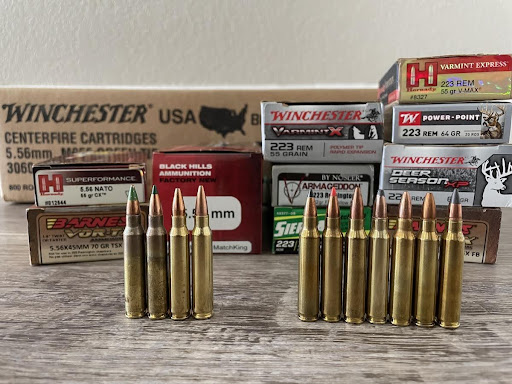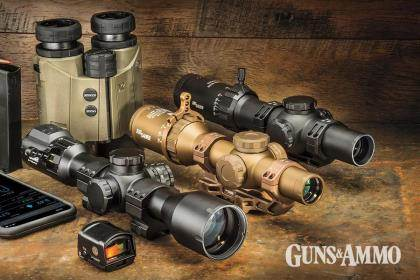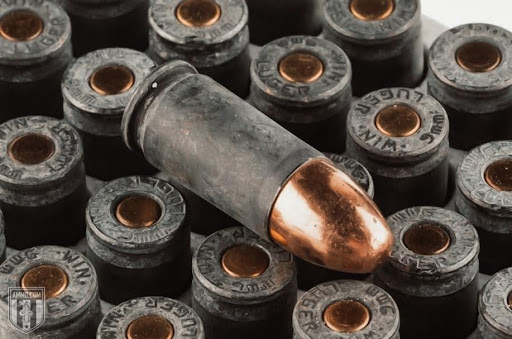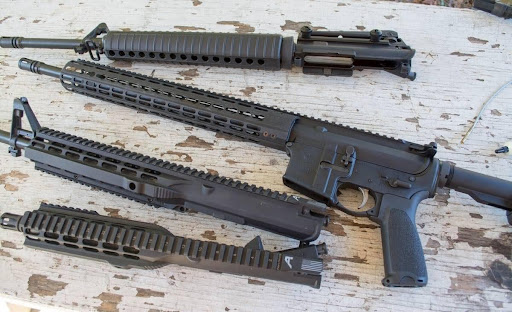Introduction
When faced with an intimidating wall of ammunition boxes at the store, it’s easy for a new shooter to feel overwhelmed by all the numbers, abbreviations, and diagrams. However, deciphering these markings is one of the most critical skills a shooter can develop for safety, accuracy, and performance. This guide will cut through the noise and reveal what those cryptic markings and specs actually mean. By focusing on the essential information—from caliber and bullet weight to understanding less obvious data like lot numbers—you’ll learn to confidently select the right ammunition for your needs, whether you’re heading to the range, the hunting blind, or a competition.
The markings on a box tell you what the round is, how it will behave, and how safe it is to use. Ignore marketing buzzwords — focus on caliber, bullet weight & type, velocity/pressure, primer/case type, and any special load notes. Below is a straightforward, practical report you can use to evaluate ammunition quickly and safely.
1) The parts of the label that matter (and what each one means)
Caliber / Cartridge name
Example: 9mm Luger, .223 Remington, 12ga 2-3/4″. This is the single most important thing. It must match your firearm’s chambering exactly.
Bullet weight
Shown in grains (gr). Example: 124 gr, 55 gr. Heavier bullets usually retain energy better and can change point-of-impact; lighter bullets usually produce higher velocity.
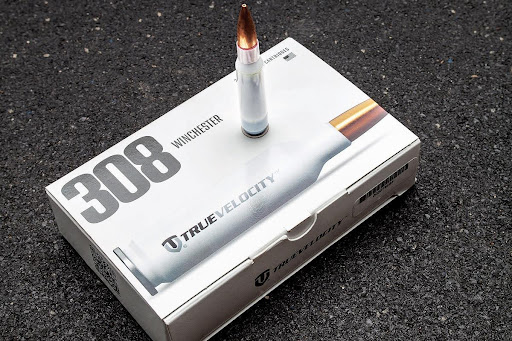
Bullet type / construction
Abbreviations and terms you’ll see: FMJ (Full Metal Jacket), JHP (Jacketed Hollow Point), HP (Hollow Point), SP (Soft Point), BTHP (Boat-Tail Hollow Point). The bullet type tells you terminal performance and whether the round is appropriate for range use vs. self-defense vs. hunting.
Muzzle velocity (fps)
Often listed as Velocity: 1150 fps (feet per second). This is measured from a test barrel and can vary in your gun. Use it to compare loads and estimate recoil/trajectory — but don’t expect it to be exact for your firearm.
Grain / load data / powder type (sometimes)
Manufacturers sometimes list grain of powder or other data. You don’t need to know the powder type unless you reload — but high-level labels like +P are important (see below).
Pressure / +P / +P+ / Magnum
+P means higher-than-standard pressure for that cartridge. +P+ and magnum cartridges are higher still. Only use +P if your firearm’s manual allows it. Never use magnum loads in non-magnum firearms.
Primer type
Boxer vs Berdan is mostly relevant to reloaders. Non-corrosive vs corrosive is important historically; modern commercial ammo is non-corrosive. Boxed as: Berdan will mean you can’t easily reload that brass.
Case material / coating
Brass, Nickel-plated brass, or Steel (sometimes lacquer- or polymer-coated). Steel cases are cheaper but can be harder on extractors and may not be compatible with all firearms; use steel only if your gun and extractor are known to handle it, and be aware steel is magnetic (useful test).
Quantity / lot number / headstamp info
Quantity (e.g., 50 rounds). Lot number is useful if there’s ever a recall or issue. The headstamp (on the case base) shows manufacturer and caliber — helpful if you buy loose ammo.
Intended use / marketing terms
Training, Match, Hunting, Self-Defense, Plinking — these are helpful shorthand but verify bullet type and velocity to confirm purpose.
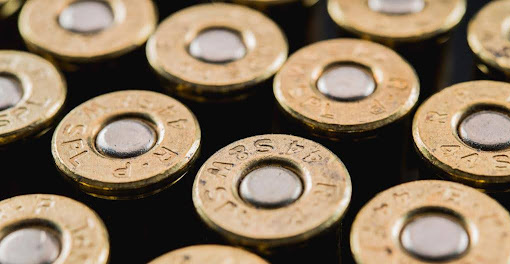
2) What really changes how the ammo shoots (practical impact)
- Caliber — must match your gun. No exceptions.
- Bullet weight & type — biggest effect on trajectory and terminal performance. A heavier bullet will usually drop more at distance but may hit point-of-impact differently. Hollow points expand; FMJ does not.
- Velocity — affects recoil, trajectory, and energy. Higher velocity often means flatter trajectory but can increase barrel wear and felt recoil.
- Pressure (+P, magnum) — changes recoil and may shift point-of-impact (POI); verify firearm compatibility.
- Case material and primer — affects extraction/reliability and reloadability. Steel cases + corrosive primers are a red flag; modern commercial ammo is typically brass and non-corrosive.
- Bullet shape (boat-tail, round-nose) — affects aerodynamics (important for precision/long-range).
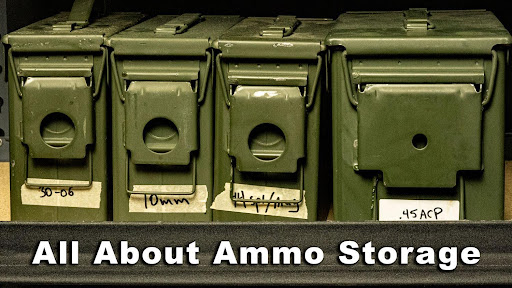
3) Safety and compatibility checklist (use every time you buy or load ammo)
- Does the box caliber exactly match the firearm marking? (e.g., .223 Rem vs 5.56x45mm NATO are not identical — see note below.)
- Is the firearm rated for +P or magnum loads? (Manufacturer’s manual.)
- Is the case material acceptable for my gun (brass preferred)?
- Is the intended use appropriate (range vs hunting vs defense)?
- Do I have the right magazines and feed length for the specific cartridge length?
- Lot number noted? Keep box until you verify function in your gun.
Special note: .223 Rem vs 5.56 NATO
These look identical but 5.56 NATO is typically loaded to higher pressure and is often fired from longer test barrels. Many rifles chambered .223 Rem should not use 5.56 NATO unless the manufacturer says it’s safe. If you see 5.56 NATO or .223 Wylde on the box, that clarifies compatibility.
4) How to quickly evaluate an unfamiliar box in 60 seconds
- Read the caliber — stop if it doesn’t match your firearm.
- Scan bullet type + weight — is it FMJ for range, JHP for defense, SP for hunting?
- Check for +P, Magnum, or special pressure warnings. If present, confirm firearm compatibility.
- Look at case (brass/steel/nickel) and quantity.
- Note manufacturer & lot number. If something feels off (missing info), don’t buy.
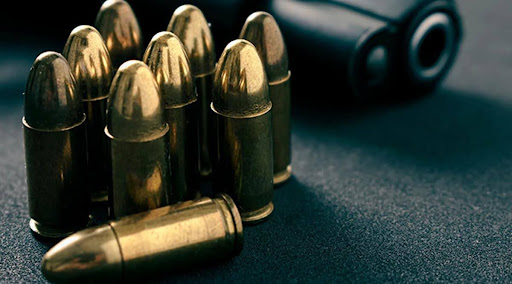
5) Buying and storage tips that matter more than fancy labels
- Buy from reputable manufacturers and dealers. Cheap, unlabeled, or mismarked ammo is a risk.
- Store ammo cool, dry, and away from direct sunlight. Keep in original boxes to track lot numbers.
- Rotate stock: use older ammo first only if it’s been stored well.
- Clean your firearm after shooting steel-case or cheap ammo. Steel can increase fouling; some coatings attract moisture.
6) Troubleshooting: common label-to-problem mappings
- Failure to feed/eject — might be steel cases, wrong case length, or ammo not suited to that firearm.
- Inconsistent POI or group size — different bullet weights or inconsistent factory tolerances. Try a barrel-specific favorite (test loads).
- Increased recoil or damage — likely +P or magnum loads used accidentally in unsupported firearm.
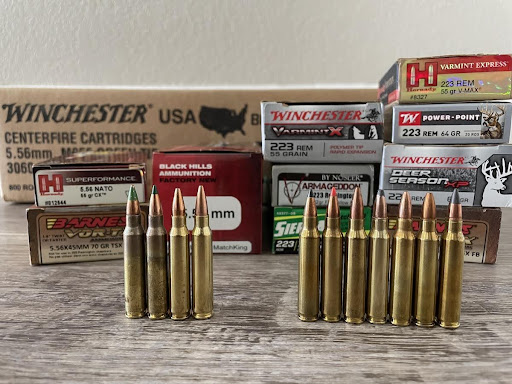
7) Quick annotated example (mock box label)
Manufacturer: Acme Ammunition Co.
Caliber: 9mm Luger
Bullet: 124 gr JHP (Jacketed Hollow Point)
Velocity: 1150 fps (muzzle)
Case: Brass
Primer: Boxer, non-corrosive
Qty: 50 rounds
Lot: A12345
Warnings: Use of +P or +P+ loads will void warranty. Check firearm manual before use.
Intended use: Personal defense
Takeaways: 9mm Luger — matches a 9mm pistol; 124 gr JHP — defensive bullet; brass & non-corrosive primer — good; no +P — safe for standard pistols.
Caliber and cartridge nuances
- Exact match matters. .223 Rem ≠ 5.56×45mm NATO even though the cases look the same. 5.56 is usually loaded to higher pressures; check your firearm manual.
- Chamber markings to watch: .308 Win vs 7.62×51 NATO — they’re often interchangeable in modern rifles, but verify manufacturer guidance.
- Shotgun notation: 12 GA 2-3/4″, 3″, 3-1/2″ — length must match your shotgun’s chamber.
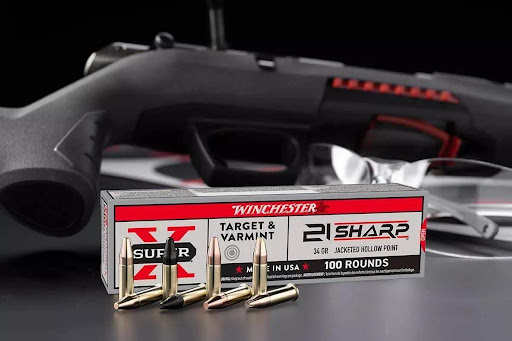
Bullet weight and type — what they change
- Weight (grains) changes trajectory, felt recoil, and terminal energy.
- Types: FMJ (range/reliability), JHP/HP (self-defense/expansion), SP (hunting), BTHP (precision).
- Shape matters — boat-tail improves long-range aerodynamics; hollow points control expansion.
Velocity and energy — how to interpret numbers
- Velocity is usually given as feet-per-second (fps) from a test barrel. Expect differences in your gun.
- Kinetic energy (ft·lbf) is a better sense of stopping power than fps alone. Use this formula:
- KE (ft·lbf) = (bullet weight in grains × velocity²) / 450,240.
Example: a 124 gr bullet at 1,150 fps:
- 1,150² = 1,322,500.
- Multiply: 124 × 1,322,500 = 163,990,000.
- Divide: 163,990,000 ÷ 450,240 ≈ 364.2 ft·lbf.
- Result ≈ 364 ft·lbf.
4) Pressure markings (+P, +P+, magnum) — what to do
- +P = higher pressure than standard for that cartridge; +P+ and magnum are higher still.
- Only use when your firearm’s manual explicitly allows it. Higher pressure changes recoil, POI, and can shorten firearm life.
5) Case material and primer info
- Brass — preferred: resists corrosion, reloadable.
- Nickel-plated brass — better feeding in some guns, corrosion resistant.
- Steel (often lacquer- or polymer-coated) — cheaper, can be harder on extractors, not reloadable; some guns don’t like steel feed/extract.
- Primers: Boxer (common in US; easy to reload), Berdan (common in some surplus/foreign ammo; hard to reload). Non-corrosive is expected for modern commercial ammo.
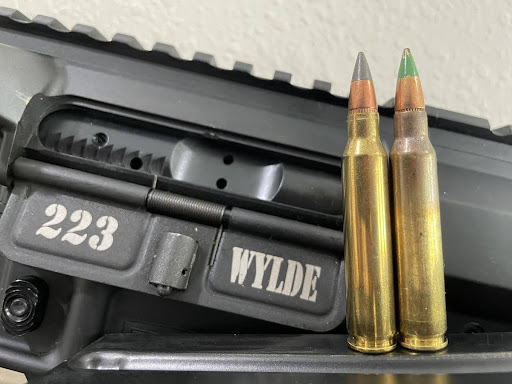
6) Headstamp, lot number, manufacturer codes
- Headstamp on case base shows manufacturer and caliber — useful for identifying stray rounds or verifying match to box.
- Lot number on box is what you keep for warranty or recall tracking. Hold onto the box until you’ve tested the ammo.
7) Interpreting marketing terms
- Words like “+P,” “match,” “defense,” “plinking” have meaning only in context. Always confirm bullet type, weight, and velocity instead of trusting marketing.
Practical checks & tests (do this before trusting new ammo)
- Visual check of the box: confirm caliber, bullet type, weight, pressure marking, case material, lot number.
- On the range — quick functional test (10 rounds):
- Fire 5–10 rounds slowly and safely.
- Watch for feeding/ejection problems and unusual extraction resistance.
- Note point-of-impact (POI) vs your normal ammo.
- Group test (3–5 rounds) from your usual shooting position to evaluate accuracy.
- Chronograph (if available): measure actual velocity in your gun — it’s the only way to get true numbers.
- Inspect fired cases: flattened primers, pierced primers, or cracked cases indicate excessive pressure. Stop firing if you see unusual primer flattening, sticky extraction, or gas leakage.

Conclusion
Reading an ammo box isn’t about knowing every technical term — it’s about checking the few specs that determine safety and performance. Focus on caliber, bullet weight and type, velocity, and any pressure markings (+P/magnum). Also note case and primer type, lot number, and intended use. Those details tell you whether a cartridge will fit your firearm, how it will shoot, and whether it’s appropriate for range, hunting, or defense. Skip the marketing language; use the label to make informed, safe choices that match your gun and your purpose.

